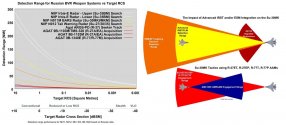We already went through it. . Russia already demonstrated producing very sophisticated German and Korean automobiles with more features at prices lower than Chinese based on there respective domestic websites.Nominally, per capita income is almost equal between China and Russia. However, when it comes to PPP, Russia's per capita income is actually about 40-50% higher than China's. All other things equal, one dollar of Russian defense spending should go further than one dollar of Chinese expenditure.
However, as you have mentioned, China has almost x10 the population. China's overall military spending is 3-5 times higher and also possesses a much larger, more diverse, advanced, and sophisticated manufacturing base, so it would be impossible for Russia to produce and acquire military assets at the same scale and pace as China. Russia can no longer rely on the quantative oriented doctrine that the USSR relied on and has to shift to a qualitative focus.
Russia manufacturing especially Aviation is away from expensive cities. so average per capita income not apply. There is no practical evidence that Chinese spending more on domestic aviation than Russia when look at entire production chain.
the word long haul is used for aircraft with greater than 7 hours in air. it need alot of experience and tests to certify plane for long durations. the IL-96 can stay in air 24hours. The radius of action 6K km for airborne command post. it gives you idea of ranges Russian working. so dont assume J-20 and PAK-FA built for same standards.
08/05/2021
UAC delivered two Tu-214 aircraft to the customer
Tu-214 is a long-haul narrow-body passenger aircraft with high fuel efficiency and comfort level.
“Today VASO is provided with orders from federal agencies under the Il-96-300 program. There are 4 machines in production in varying degrees of readiness and there are prospects for additional loading of the enterprise with new contracts. The production of a new passenger Il-96-400M is underway. This program will allow developing the platform and the modernization potential of the aircraft, as well as ensuring the development of competencies for the creation of this type of aircraft, ”said Yuri Borisov.
“The aircraft’s radio complex will make it possible to deliver orders to the troops, including strategic aviation, mobile, and silo launchers, submarines, and carriers of strategic nuclear weapons within a radius of 6,000 kilometers (3,700 miles),” the outlet reported.




